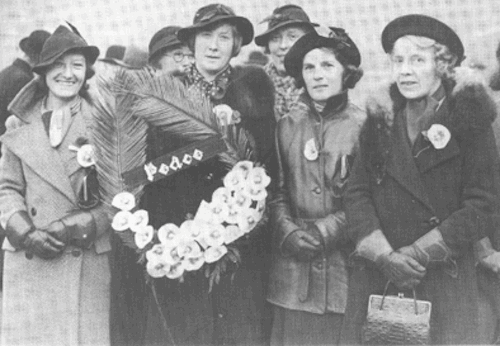A project aiming to encourage schools to teach children about white poppies has attracted criticism from a retired British army officer.
First worn by the members of the Women’s Co-operative Guild in 1933, the white poppies have become a symbol of peace and a call to resist war. In 1936 the white poppy was adopted by the Peace Pledge Union (PPU), the oldest secular pacifist organisation in Britain, which now coordinates the initiative.
Recently, PPU exhibited at the National Union of Teachers’ conference where they were approached by 100 teachers to sell white poppies in schools ahead of Remembrance Sunday.
The school pack includes 100 white poppies in a display box, alongside an information pack with white poppy information leaflets and Rethinking Remembrance Day resources. The pack can be purchased for £60 and was developed in collaboration with ForcesWatch, a non-profit organisation challenging military presence in education.
The move has been criticised by Colonel Richard Kemp, who commanded the British forces in Afghanistan. He said: “I think it is perfectly reasonable for schools to discuss different political perspectives, but they should not be indoctrinating children with a left-wing political agenda.”
He added that the red poppy, along with Remembrance Sunday, were “institutions of the state” part of the country’s tradition. The colonel said it was “right” that schools sold red poppies, but that the poppy was not “a political hobby horse”.
“It is a means of raising money for the welfare of soldiers and for the families of soldiers who have been killed, it has a specific purpose, which is not political. The red poppy should be respected as opposed to another fringe political movement,” he told The Telegraph.
Responding to the comment, Symon Hill, co-ordinator of the Peace Pledge Union, said: “It is bitterly ironic that pacifists should be accused of indoctrinating children at a time when military visits to schools are on the rise and the number of cadet forces in state schools has more than doubled in four years. Far from indoctrinating children, we are doing the exact opposite: challenging a one-sided pro-military message and seeking to ensure that young people hear different sides of an argument.
“Richard Kemp defends red poppies on the grounds that they are ‘institutions of the state’. This is a worryingly authoritarian phrase. Both red and white poppies are political, representing different values.
“Schools that sell both white and red poppies are helping young people to think through their values and form their own judgements. This is what education should be about.”
Red poppies and white poppies

Red poppies are a symbol of remembrance of the victims of war and were first adopted by the Royal British Legion in 1921. The same year the legion ordered 1.5million poppies for 11 November and raised more than £100,000 by selling them. It then decided to set up its own poppy factory, with disabled ex-servicemen making up the workforce. The red poppies continue to be produced at the Royal British Legion’s factory in Richmond.
The white poppies represent all victims of war, including civilians, ambulance drivers and those who fought for a different country. Members of the Women’s Co-operative Guild started wearing them to symbolise that they were against war and violence. Workers from the Co-operative Wholesale Society began making white poppies and the money gathered from selling them went to help war-resisters in Europe.
Women started wearing poppies to demonstrate their remembrance not by remembering the war, but by pledging themselves to peace. Some chose to wear white poppies only, others were wearing both white and red poppies.
The Legion has consistently turned down requests to make the white poppies, choosing to produce red ones only.
Proceedings from the red poppies go to former servicemen and women and their families, while the money raised via the white poppies goes to fund peace education work, some of which can be seen at LearnPeace. Over the past three years, PPU has been selling over 100,000 white poppies every year.
The red poppy is primarily worn in the UK and Commonwealth countries, but the white poppy has gone beyond being a national symbol, having been sold in countries like Australia, New Zealand, Canada and Belgium.
Around 120 countries outside the UK are sent three million red poppies by Royal British Legion, mostly for UK citizens who emigrated. Overall the charity’s factory in Richmond produces 36 million poppies a year.
Poppies tend to be worn from 26 October to Armistice Day on 11 November. Remembrance Sunday falls on 12 November in 2017.

